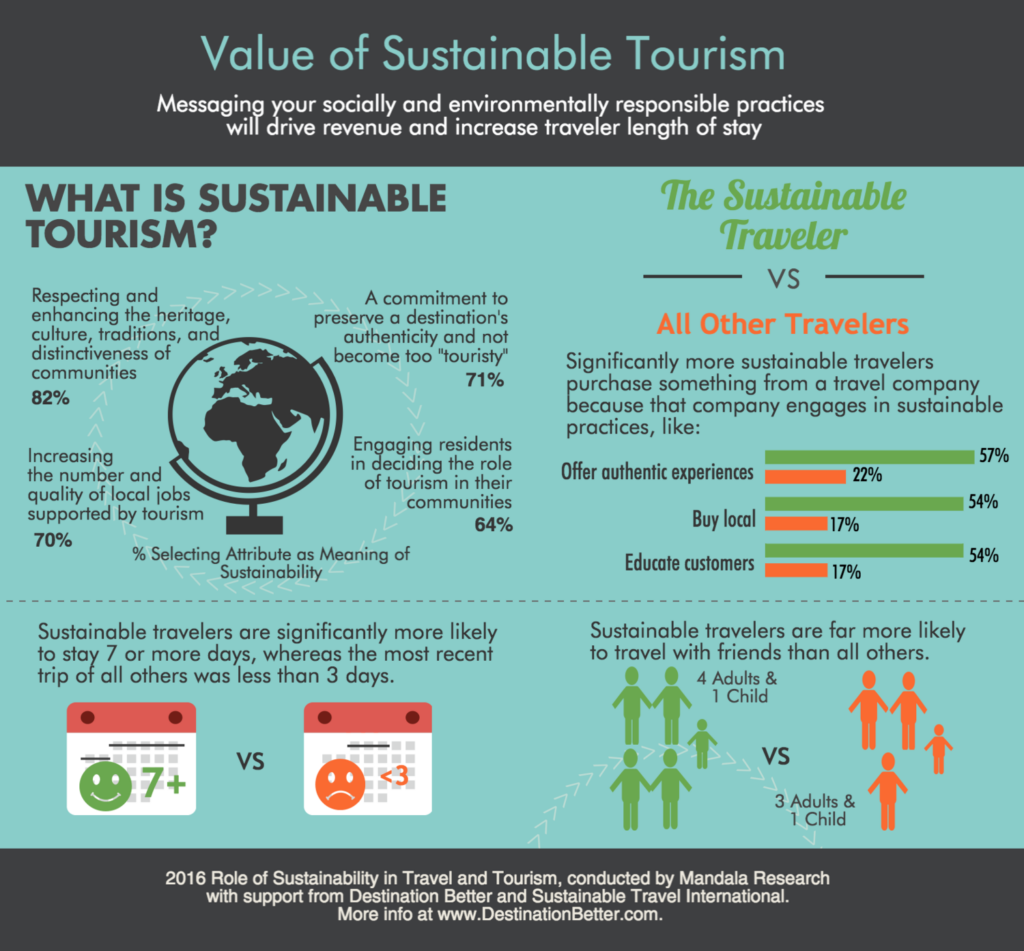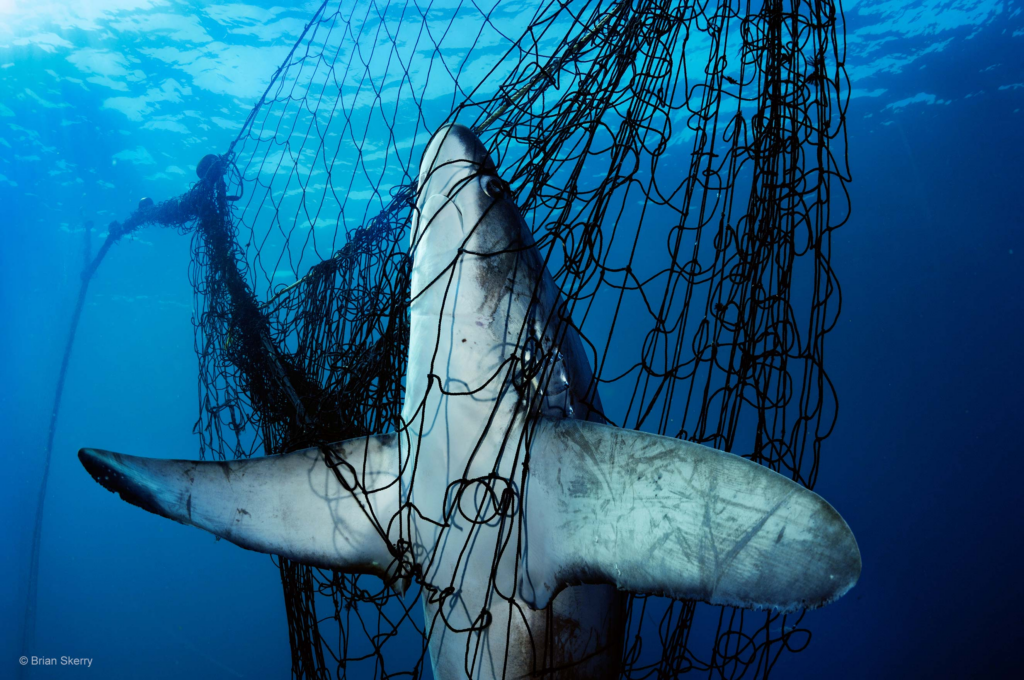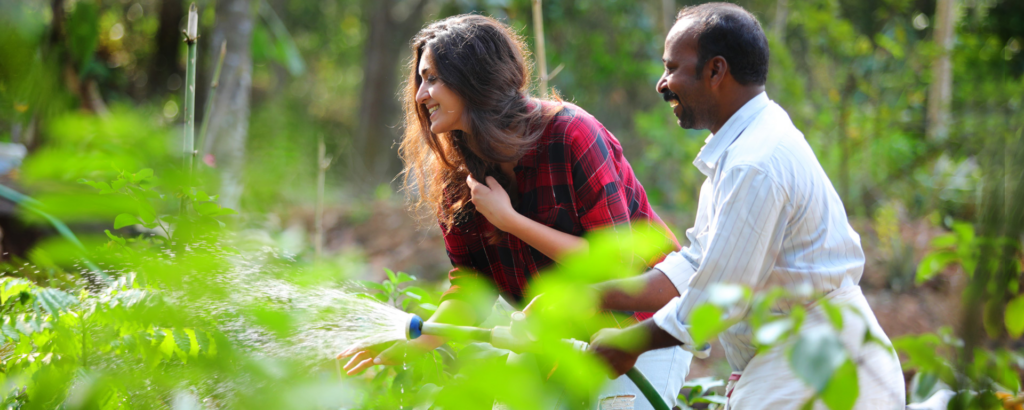Sustainable tourism has emerged as a crucial approach to preserving our planet’s natural wonders and supporting local communities. It goes beyond mere leisure, and seeks to minimize the negative impacts of tourism while maximizing the benefits for both the environment and society.
In this era of heightened environmental awareness, the role of photography has become increasingly significant in promoting sustainable tourism. Through the lens of a camera, photographers have the power to capture the essence of sustainable destinations, raise awareness about environmental and social issues, foster responsible travel, and engage and empower local communities.
Why Sustainable Tourism Matters

Courtesy – Destination Better
- Preserving Paradise: Sustainable tourism seeks to protect the pristine beauty of destinations, ensuring future generations can experience the same breathtaking landscapes and awe-inspiring environments. By embracing sustainable practices, tourism minimizes its ecological footprint, allowing us to explore the world without harming nature.
- Empowering Communities: Sustainable tourism supports local economies, empowering communities to thrive and preserve their cultural heritage. It’s a win-win for travelers and locals alike!
- Guarding Wildlife: Sustainable tourism promotes responsible wildlife encounters, safeguarding the magnificent creatures we share this planet with.

Brian Skerry’s The Sacrifice, Courtesy – Natural History Museum
- Reducing one’s Footprint: Traveling sustainably reduces greenhouse gas emissions, showing that adventure and saving the planet can go hand in hand.
- Finding Authentic Experiences: Sustainable tourism encourages authentic cultural exchanges, immersing travelers in the rich tapestry of local traditions, flavors, and customs. Say goodbye to cookie-cutter trips!

Courtesy – iStock
Remember, sustainable tourism isn’t just a trend—it’s the only way to ensure the places we love remain vibrant and accessible for years to come.
What Does Photography Have to Do with It?

Responsible Tourism Mission, Courtesy – Kerala Tourism
Photography is more than just pretty pictures; it’s a lens through which we can showcase the importance of sustainable tourism.
1. Framing the Future: Photography captures the beauty of sustainable destinations, reminding us why we must protect these paradises for generations to come. Through powerful images, photography raises awareness about environmental issues and inspires travelers to embrace sustainable practices. It’s a snapshot of eco-activism, sometimes literally!
2. Lens of Change: Photographers document the impacts of unsustainable tourism, exposing the ugly truth behind destructive practices. Their photos ignite a desire for positive change and responsible travel. Social media platforms become platforms for change when photographers share images that promote sustainable tourism.
3. Focus on Local Life: Photography celebrates the cultures and communities behind sustainable tourism. By showcasing their traditions, cuisine, and crafts, photographers promote authentic and respectful travel experiences.
4. Click for Conservation: Photography can directly contribute to conservation efforts by supporting wildlife and environmental organizations. One snap at a time, we can fundraise and save the planet!
5. Documenting Environmental Degradation: Photographers serve as visual storytellers, documenting the devastating impact of human activities on the environment. Their images expose deforestation, pollution, climate change effects, and other forms of environmental degradation. By showcasing these images, photographers raise awareness and inspire individuals, organizations, and governments to take action in preserving and restoring the environment.
6. Promoting Wildlife Conservation: Photographers play a vital role in capturing the beauty and vulnerability of wildlife. They document endangered species, animal habitats, and conservation efforts, showcasing the importance of protecting biodiversity. Their images create emotional connections, fostering empathy and support for wildlife conservation initiatives.
Fostering Responsible Travel through Visual Storytelling
Visual narratives have a powerful impact when it comes to highlighting sustainable practices in various aspects of tourism.
1) Eco-Friendly Accommodations:
- Photographs can capture elements such as energy-efficient architecture, renewable energy installations (solar panels, wind turbines), green roofs, and water-saving systems like rainwater harvesting and greywater recycling.
- These images can demonstrate sustainable features like organic gardens, locally sourced materials, and recycling initiatives.
- Extensive research by organizations like the Global Sustainable Tourism Council (GSTC) and Green Key can provide comprehensive insights into eco-friendly accommodation practices.
2) Responsible Wildlife Encounters:
- Photographs can showcase ethical wildlife tourism practices, such as observing animals in their natural habitats, without interference or exploitation.
- They can capture images of tourists while maintaining a safe distance, using binoculars or camera lenses to appreciate wildlife without causing stress or disturbance.
- Research by reputable organizations like the World Animal Protection (WAP) and the International Union for Conservation of Nature (IUCN) provides guidelines for responsible wildlife tourism and can serve as a credible resource.
3) Respectful Cultural Interactions:
- Photographs can capture moments of cultural exchange, emphasizing respectful behavior, such as visitors engaging in conversations with locals, participating in cultural activities, and wearing appropriate attire.
- They can highlight interactions that prioritize consent, showcasing visitors seeking permission before taking photographs and respecting cultural sensitivities.
- Research by organizations like the United Nations World Tourism Organization (UNWTO) and the Ethical Traveler can provide insights into cultural sensitivity and responsible tourism practices.
Indian Photographers & Sustainable Tourism
Several Indian photographers have utilized their work to encourage responsible travel behaviors and promote sustainable tourism practices. Here are a few notable examples:
1) Sudhir Shivaram:

Courtesy – Sudhir Shivaram, Sony Alpha Community
- Sudhir Shivaram is a renowned wildlife photographer in India who uses his captivating images to raise awareness about wildlife conservation and responsible wildlife tourism.
- His photographs highlight the beauty of India’s diverse flora and fauna, while also emphasizing the need to protect and preserve these habitats.
- Sudhir Shivaram actively promotes ethical wildlife encounters, encouraging viewers to respect animals in their natural habitats and support conservation efforts.
2) Neelima Vallangi:
- Neelima Vallangi is a travel photographer and writer who focuses on sustainable and responsible travel in India.
- Through her photography, she captures lesser-known destinations and cultural experiences, showcasing the importance of preserving local heritage and supporting local communities.
- Neelima promotes mindful travel practices, such as minimizing plastic waste, respecting local customs, and engaging in sustainable activities.
3) Pravin Tamang:

Holy River: Orchha by Pravin Tamang
- Pravin Tamang is a landscape and nature photographer based in the Indian Himalayas.
- His photographs showcase the stunning landscapes of the Himalayan region while advocating for responsible trekking and mountaineering practices.
- Pravin uses his work to promote Leave No Trace principles, encouraging travelers to minimize their impact on fragile mountain ecosystems.

Mountains are Calling, Ladakh. Courtesy – Pravin Tamang
4) Saurabh Chatterjee:
- Saurabh Chatterjee is a travel and landscape photographer who advocates for responsible travel in India.
- Through his photographs, he captures the beauty of India’s natural landscapes, encouraging viewers to appreciate and protect these pristine environments.
- Saurabh actively promotes sustainable travel practices, such as staying in eco-friendly accommodations, respecting local cultures, and supporting local artisans.

Tourism is damaging the ocean. Here’s what we can do to protect it. Courtesy – Weforum.org
In a world where wanderlust meets responsibility, sustainable tourism takes the stage. Let’s embark on adventures that leave footprints of positive impact, guided by the witty click of a camera and the power of knowledge and awareness.









